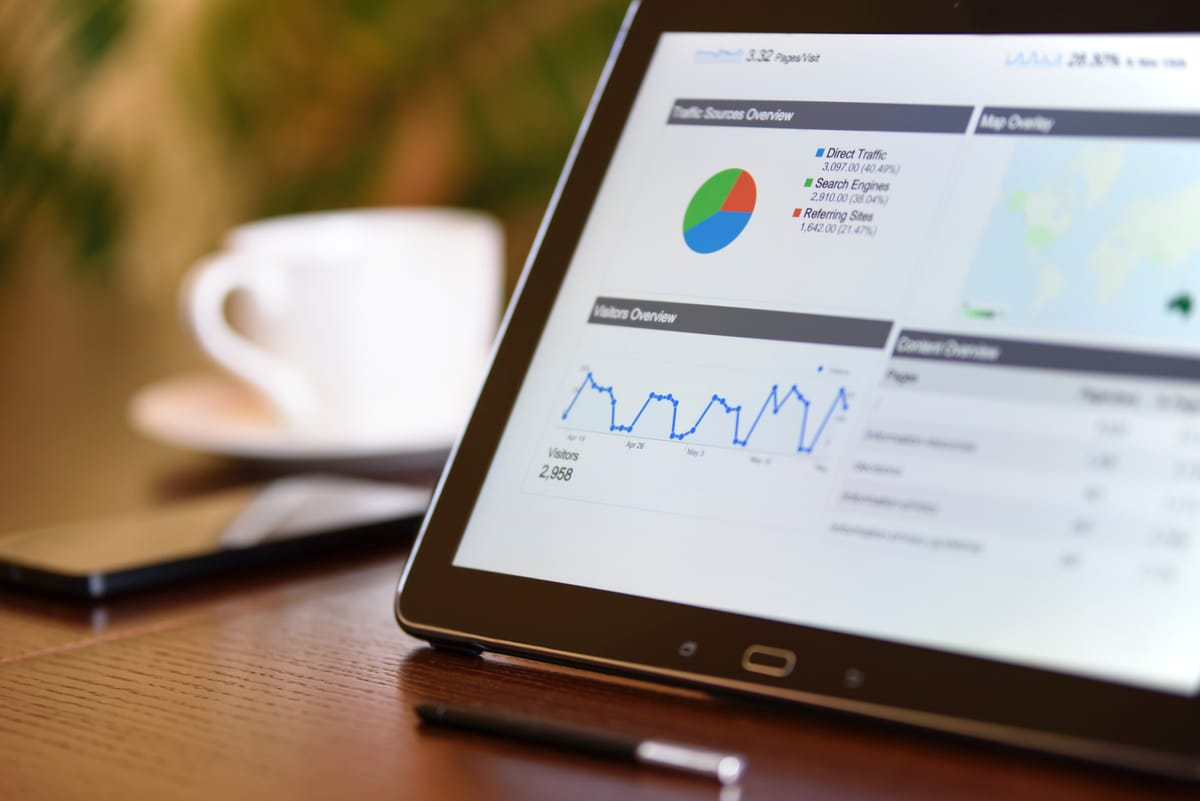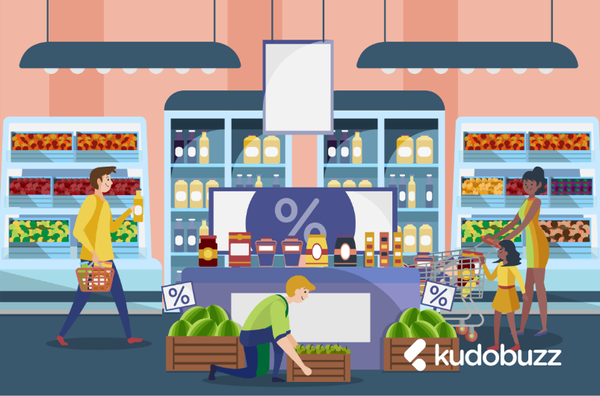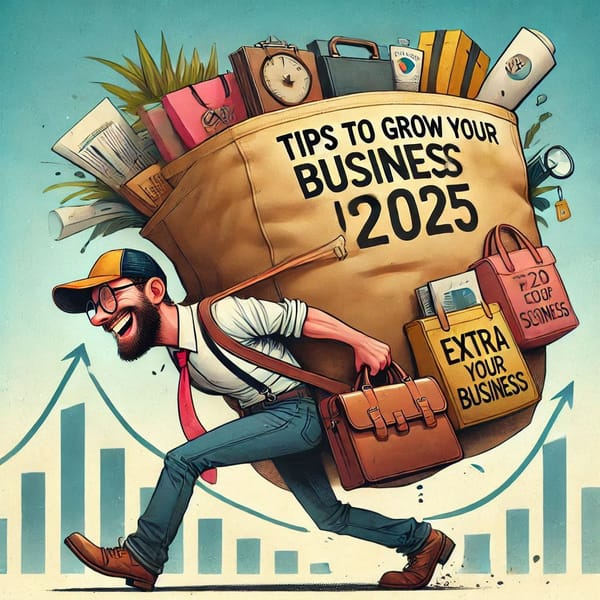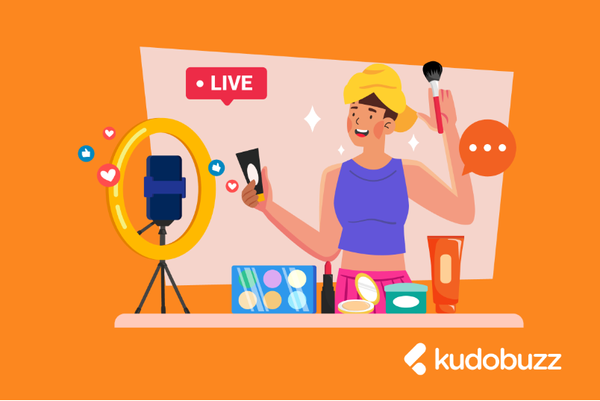As a merchant, your ultimate goal is to increase sales and earn enough profit to keep your business afloat. Achieving this requires having more people seeing or visiting your store in what is termed as organic flow of traffic. One tried and tested way of driving organic traffic is Search Engine Optimisation (SEO).
That is why 61 percent of marketers say improving SEO and growing their organic presence is their topmost inbound marketing priority. A good SEO checklist for your Shopify store will increase traffic and boost your Return on Investment (ROI).
Unfortunately, driving traffic is still a nightmare for eCommerce businesses.
According to 2017 State of Inbound report, generating traffic and leads is the foremost marketing challenge that companies are grappling with. Below is a graphical summary of the report:
Image Credit: The 2017 State of Inbound Report
From this article, you’ll learn everything there is to know about leveraging SEO to boost traffic for your online store. You'll additionally learn about non-SEO factors that can drive traffic to your store.
SEO Factors That Can Drive Traffic to Your Site
When it comes to boosting traffic to your site, On-Page SEO cannot be overlooked.
SEO is the act of influencing the online visibility of your site in a search engine’s unpaid or organic results. It has been estimated that 93 percent of all traffic comes from a search engine and can drive up to 300 percent more traffic to content sites than social media.
It's worth mentioning that boosting SEO and making your site easily discoverable to searchers is not automatic. It requires deliberate approach and an ongoing practice including the following:
Using An SEO-Friendly URL
Your URLs are first port of call to your website that greet search engine bots and customers. Your URL should therefore be friendly to both Googlebots and humans. You can make your URL friendly by making your URL short and incorporating the relevant keyword.
In terms of short URL, it limits the number of characters needed to get your message and link across, makes it easier for users to share links on social media platforms, as well as allows you to brand your links. Besides these, shorter URLs tend to rank better than long URLs, according to Backlinko.
There are URL shortener services like Bitly and Goo.gl that allow content creators to shorten a long and complex URLs or web addresses to something shorter and more aesthetic.
Incorporating the right keywords will also help search engines to understand what your page is about to enable search bots to index them.
Targeting Long-Tail Keywords
When customers want to buy something on the internet, they often enter three or four keyword phrases into their browsers. These highly specific and simple key phrases are termed as long-tail keywords.
Long-tail keywords tend rank far better than the more generic single or double keyword phrases. This is because they have less competition.
For example, if you pick a keyword like blue jeans, there would be thousands of outlets selling blue jeans. However, if you take say, blue jeans for children, it’s more specific and likely to have less competitors.
Also, Google and other search engines like sites that have more pages;therefore, using long-tail keywords would help your pages to rank better. So while boosting high sales conversions, long-tail keywords will also ensure easier rankings of your site.
The good news is that there are a good number of tools that can assist you to conduct keyword research such as Google Keyword Planner and Moz Keyword Explorer. You can refer to this blog post on how to research keywords for Shopify store.
Therefore, you should include relevant keywords in your titles, meta descriptions, body content etc, to enhance ranking and boost traffic to your site.
Inbound And Outbound Links
It’s a foregone conclusion that good SEO for your Shopify store will drive more traffic to your site. SEO is all about giving search engines reasons to regard your content as important. One way search engines use to determine the relevance of your content or to determine whether or not your content is offering value to users is the quality of links from other sites to your site or vice versa.
There are two types of such links:
The first type of link is the inbound link which is a type of a hyperlink back to your site from an external site. When you have a lot of high-quality backlinks from other sites, search engines will automatically see your content as providing value to many people and therefore rank it higher. When more people can easily see your content or product, it presupposes that more people will visit your store leading to more traffic.
The next type of link is the outbound link sometimes also called external link. The outbound links start from your site and lead to an external site. According to a study, outbound linking has a positive impact on SEO.
Improving Your Page Load-Time
Web browsers are impatient when it comes to surfing through lots of pages on your store. A microsecond delay in load time will lead to you losing customers. Therefore, ensuring your pages load faster encourages more people to visit your site, leading to an increase in traffic and sales.
You can refer to this blog post on SEO for Shopify - how long it takes to rank. This blog post is a useful resource and a complete guide on how to detect and fix slow loading pages.
Adding Social Share Buttons
In 2019, social media users increased sharply to 3.484 billion active users.This means almost 45 percent of the global population are now active social media users.
Did you know that 75 percent of consumers turn to Facebook before making a purchase? Social signals have become a crucial factor for search engine ranking because social media influence boosts authority of blog posts.
You should therefore make your Shopify store social media share friendly. This will enable your site visitors to share your products, reviews or content they find interesting with friends, colleagues and family members.
Incorporating the right social media share buttons on your store is a step away to increasing traffic to your site. As more people share your content on various social platforms, more people will become aware of your existence and may check you out. Some of these people will eventually become your customers.
High-Quality In-Depth Content
Before you can run an effective Shopify store, you first have to understand what is termed as the buyer's journey.
It’s essentially the stages buyers go through before they take a purchase decision. This includes when they become aware of the product, when they evaluate it, and when they finally decide to purchase your product.
The buyer’s journey involves three phases:
- Awareness stage is when the buyer realizes he/she has a problem and begins to research about it.
- Consideration stage is when the buyer defines his/her problem and decides to look out for possible solutions available to him or her.
- Decision stage is when the buyer arrives at a suitable solution after a thorough weighing of options.
The buyer’s journey shows that running a Shopify store is not just about stocking your products. Far from that, customers want to be guided through a chain of processes to help them arrive at a purchase decision.
When you pamper customers with such valuable guidance, they’ll naturally develop some attachment to your brand and note that you care about their needs and understand them. For simplifying their lives with useful information, they are more inclined to trust and buy from you whenever they finally make up their minds to buy.
This is why stocking products on your Shopify store should be complemented with useful content education to guide your prospects. Even though producing content may not show immediate results, it’s your best safe bet for long-term growth.
According to the 2017 Content Management and Strategy Survey, 92 percent of content marketers regard blog content as an asset to the success of their business.
Another study also found that 84 percent of millennials say user generated content has at least some influence on what they ultimately purchase.
Beyond the statistics, rich content is a powerful marketing tool that constantly refreshes the minds of customers about a brand, showcases a brand in front of your customers, empowers buyers to make informed purchase decision, etc.
SEO for your Shopify store thrives on rich content. Search engines rank sites with compelling content that answers the needs of searchers over others.
According to Andrey Lipattsev, Search Quality Senior Strategist at Google, high-quality content and link building are the two most important signals used by Google to rank your website for search.
To drive the right traffic to your Shopify store that will translate into positive Return on Investment (ROI) on your business, you should have a solid content strategy in place to enable you churn out high-quality targeted content on a regular basis.
When it comes to the production of content, the following types of content are useful when it comes to driving traffic to your site:
Guest-Blogging
Guest blogging is essentially writing blog posts for publication on other third party websites. It could also involve arrangement where you swap a blog post with another site’s .
Even though the concept of creating content is to educate your customers, it’s highly useful to create content for other websites to help you drive organic traffic to your own site.
Guest-blogging will help introduce your brand to a new audience and new influencers who would want to check your site leading to build up of referral traffic from other sites to yours.
Guest blogging will also help you earn editorial backlinks from authoritative sites to yours which is healthy for the SEO of your site.
More importantly, it establishes you as a voice of authority in your field leading to brand awareness.
You can start your guest blogging campaign by identifying blogs that have a reputation and then enter into an agreement with the owners of such blogs for a content collaboration
Vlog Post
A vlog is any content in the form of a video. It is also called video blog or video log. Videos have become a powerful medium of marketing.
According to a survey conducted by Renderforest, 78 percent of users got more traffic to their website after using videos. The survey further indicated that 80 percent of global internet consumption will be video content in 2019.
Plus, 92 percent of mobile video consumers share videos with their family, friends, and colleagues. This means, videos are a great way to increase organic traffic to your Shopify store.
To get the best results, create a blog post and create Youtube videos based on the blog post. Then embed your video in the actual post. Add a link to the post in the description of the video on YouTube. This will generate tons of traffic to your site because Google automatically shows relevant videos from the platform higher than other content.
In addition to driving more traffic to your store, links from YouTube enhance the authority of your site because YouTube is regarded as a major search engine in itself which is healthy for the SEO of your store.
Infographic
Another unique content that is a great way to drive traffic to your site is an infographic.
An infographic is a combination of the words, “information” plus “graphics”. It is a form of visual content intended to make data easily understandable at first glance.
Infographics are powerful medium for showcasing data, breaking down complex concepts, showing trends, simplifying presentations, mapping relationships, and providing essential insights
This shows that infographics are a great way to boost traffic to your site because infographics are liked and shared on social media up to three times more than other content. Moreover, an infographic is 30 times more likely to be read than a purely textual article.
There are a lot of resources online that merchants can rely on to create infographics. The good news is that there are free infographic template layout, visual formats etc that give room for customization. You can refer to this blog post from Visme on how to use Infographics to boost SEO and build links.
Publish New Information
Customers naturally want to stay up-to-date with breaking news, latest trends and recent events. Strategically publishing such content on constant basis will drive more organic traffic to your site, especially if you’re the originator of such content. When such content are well crafted, you can also earn a lot of backlinks from authoritative sites which will enhance your SEO.
Over time, you will build a reputation as a great source for new information and events, earning you respect as an industry thought leader.
You can rely on tools such as Google trends to have a beep of what’s trending.
Creating Evergreen Content
Another type of content that can drive tons of traffic to your site is evergreen content. Evergreen content is timeless content that’s creatively written to serve as an all-time relevant, sustainable, definitive resource to readers. Simply, it is content which stays fresh all the time, not immediately outdated and keeps driving traffic long after it’s published.
Since evergreen content are intended to be a comprehensive resource, it’s quite lengthy ranging from 2,000 words up to 20,000 or more.
On the other hand, content on statistics, latest trends, new item etc will fizzle out quickly with time.
To enjoy a constant flow of traffic, you should create evergreen content that will stay relevant even with the passing time. This will help it to rank highly on search engines for months or even years from when it was first published.
Due to its timeliness nature, evergreen content attracts more readers which often result in more engagement including bookmarking, shares and links from authority sites.
Tips For Creating Evergreen Content
Below are some tricks that can help you produce an evergreen content:
- Writing an industry guide and tips, "how to" articles, or advice
- Explaining common concepts in your industry for your readers
- Answering reader FAQs (frequently asked questions)
- Listing. Example: List of carnivorous animals.
- Ebooks. Ebooks are usually downloadable content often in a PDF format.
- Product reviews
For your Shopify store to attract the right traffic to help increases, employ these meaningful content experience. But for these strategies to make the best impact, you should know how to fix all 404 Page Not Found errors on your site to sustain the gains.
Non-SEO Factors That Can Drive Traffic to Your Site
Even though SEO is an effective way to drive traffic to your site, there are other non-SEO strategies you can take advantage of to boost traffic to your site and increase sales and profit.
Taking Advantage of Google AdWords
Another way you can drive traffic to your Shopify store is to pay for it. Google AdWords is one of such a pay-per-click advertising method that you can take advantage of. This method involves paying for the ad when someone clicks on it, views your video or calls your business.
Create An Exceptional Sales Campaign
There are also other exciting sales campaigns you can take advantage of to attract customers to your store. Customers want surprises and the best deals. On special occasions like holidays, Christmas or Easter, you can offer discounted sales to delight your customers. Take advantage of the following tips to get started:
- Create Giveaways: Occasionally, create a competition to excite and reward your customers. Customers want to be spoilt with exciting giveaways. Therefore, creating such giveaways will keep your customers coming back to your store at every given moment. These customers will also invite their friends, colleagues and family members to take part in such competitions. Some of these people will end up becoming your loyal customers. Reward them with free shipping, shopping coupons, a lunch coupon, a T-shirt, etc that your budget can contain.
- Discounts and Deals: You can put goods that are not attracting sales or that have been kept on stock for so long on a “buy one, get one” deals. Customers love to save money and they will hurriedly jump to such offers. It can also be a 5 percent off or 50 percent off discount. It will lure more people to rush to your store leading to more traffic to your site. Those who rush to your store to grab such offers may see other undiscounted products and may be attracted to buy, leading to more sales.
- Create a sense of urgency: Another trick that can drive traffic to your Shopify store is creating an emergency sales or short term discounted sales tied to a certain timeline. Whether it’s free shipping until the end of the month or announcing a huge upcoming sale, your customers would want to take advantage of such window period to shop more and save some money.
Use Email Marketing
When you start your Shopify store, you should begin in earnest to build an email list that contains all email contacts of people who purchase from your store.
With this list, you can occasionally invite your old customers to take advantage of flash sales or new designs and new arrivals. Even though some of them may not respond by actually buying from you, others would do which would drive organic traffic to your store. Needless to say, you will remain in the good books of those who may not immediately respond to your purchase request.
Your campaign may target lost customers that abandoned their cart during the purchase process, new customers that have never purchased from you before or existing customers.
Involve Brand Influencers
Have you ever purchased something because someone you trust or admire recommended or bought it? Social media influencers, trend-setters, local bloggers and ordinary people who have built some clout and enjoy a large following can be worthy ambassadors in helping you to reach a large audience. In fact, 70 percent of millennials prefer product endorsements from their “peers” rather than celebrities.
People who have a large social media following influence people’s purchase decisions. Influencers introduce your products to a whole new market or audience. So depending on your budget, you can recruit a few brand influencers to help you reach new audiences. This will potentially drive traffic to your site and boost your ROI. You can begin by asking your marketing team to look out for these people via social media or personally walking up to them. Negotiate with them and get going.
You can also refer to this blog post on how to run a successful Social Media influencer marketing program.
All in all, your eCommerce business requires a comprehensive strategy to put you ahead of your competitors. These strategies should include a clear plan of boosting your SEO and putting your Shopify store at the doorstep of internet searchers. It should also include non-SEO factors as spelt out above.
Help us publish content solutions that serve value for your eCommerce business by leaving your views at the comment section below.
Call To Action
If you want to read more content on how to succeed as an e-commerce owner, sign up for our weekly newsletter below to receive resources and tips on how to increase sales and revenue straight into your inbox.








